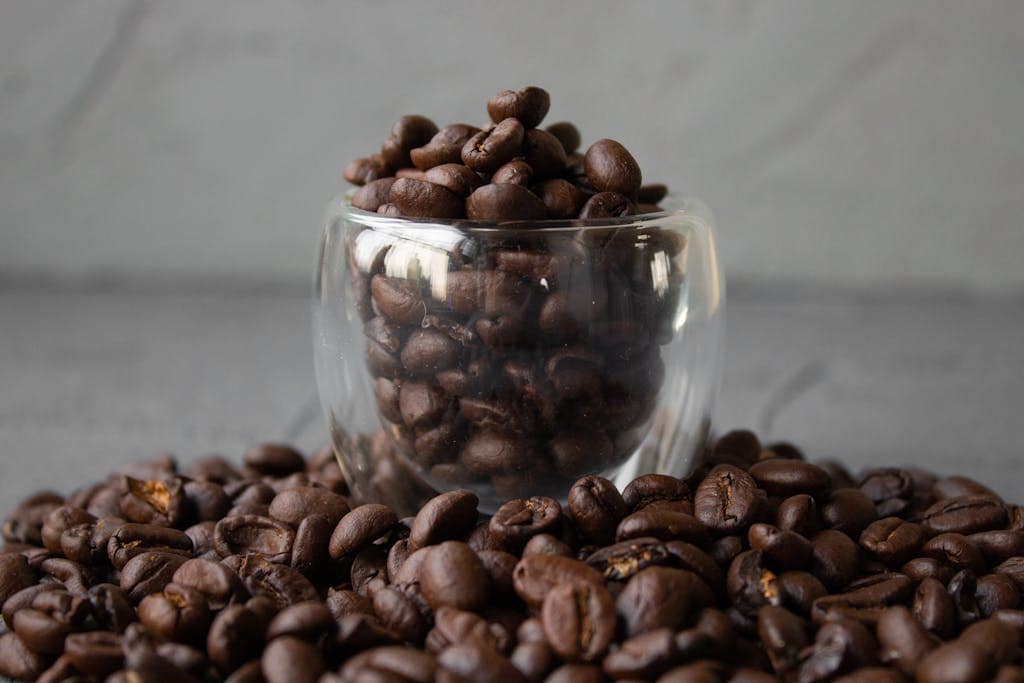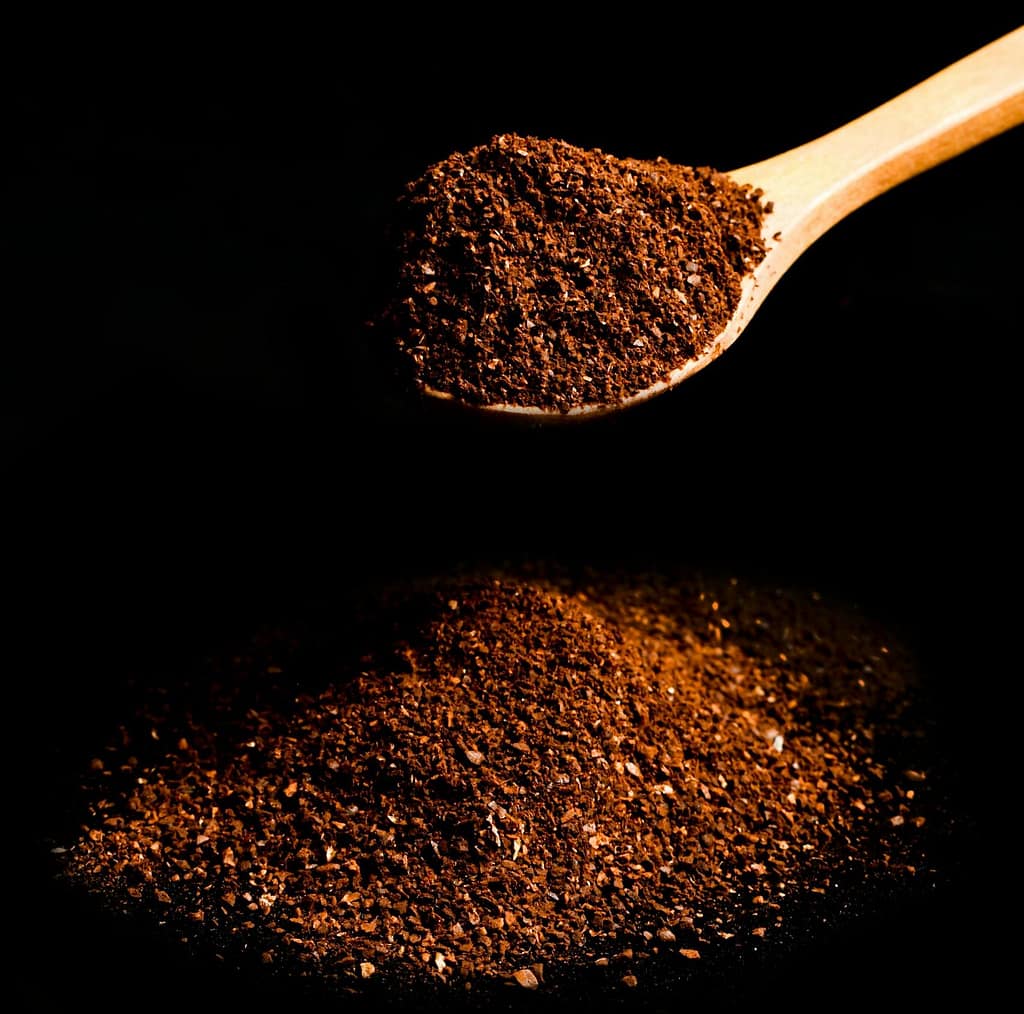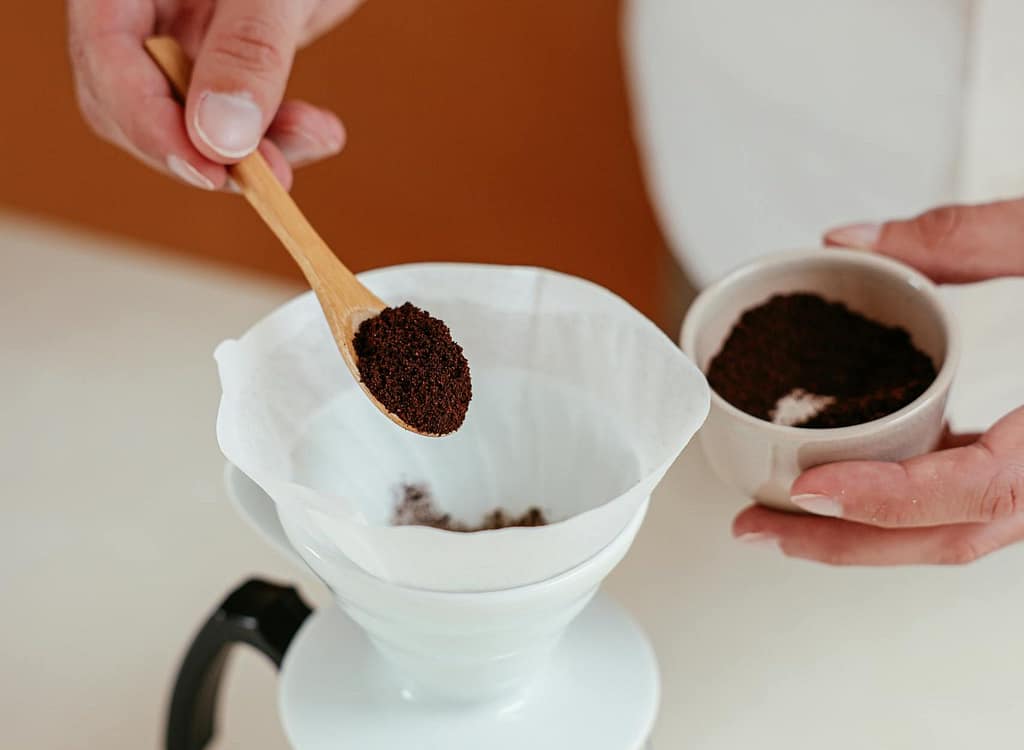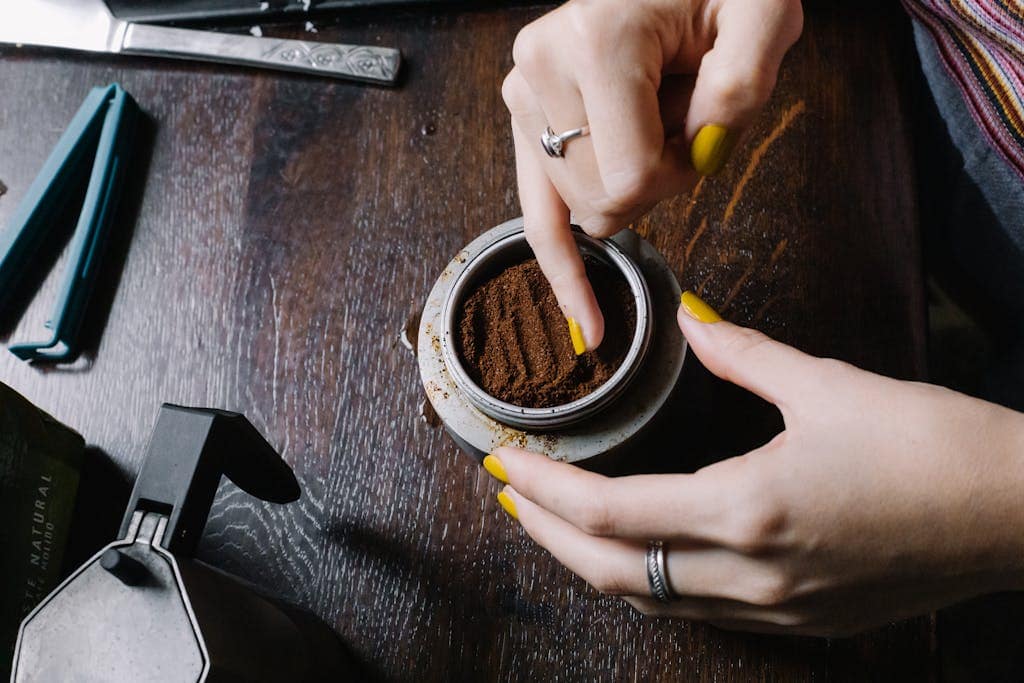Ever wondered why your homemade coffee doesn’t taste as good as the one from your favorite café? The secret’s in the beans—specifically, how you grind them. Grinding coffee beans just right is crucial for getting that perfect cup. This guide will break down everything you need to know, from selecting the right grind size to using the proper equipment. Even if you’re a total newbie to grinding beans, by the end of this post, you’ll know how to get it done like a pro.
Let’s get started on unlocking the full potential of your morning brew!
The Magic of Freshly Ground Coffee
When it comes to enjoying coffee, nothing can beat the magic of freshly ground beans. There’s something special about the rich aroma that fills the air and the complex flavors that unfold in each sip. But why does grinding coffee beans just before brewing make such a difference? Let’s explore.
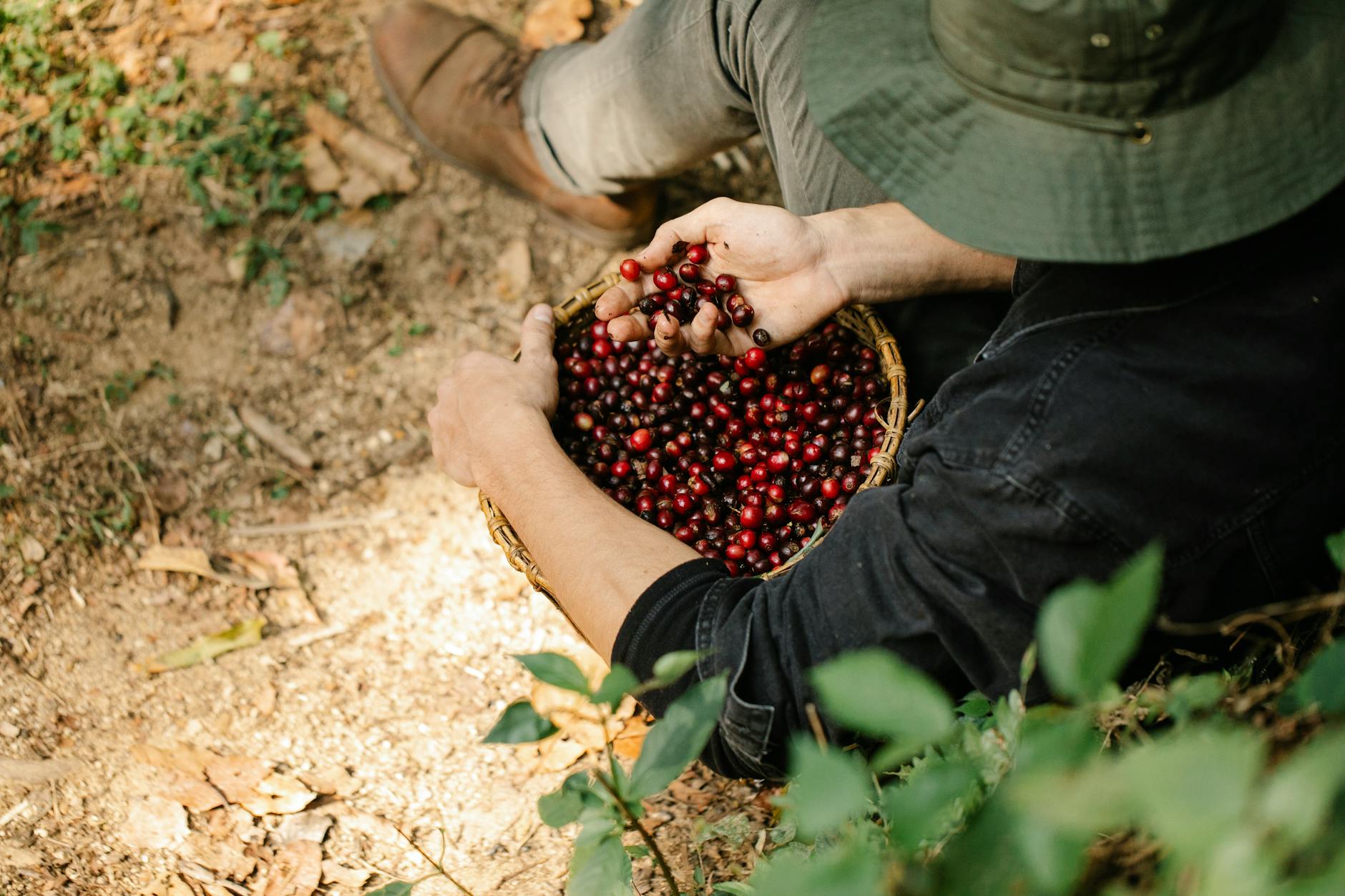
Photo by Michael Burrows
Flavor Explosion
Grinding coffee beans just before brewing releases their flavorful oils and aromas. When coffee is ground, the surface area exposed to water increases, allowing for better extraction of flavors. Pre-ground coffee loses these precious oils over time, resulting in a stale taste.
Here’s what freshly ground coffee offers that pre-ground coffee can’t:
- Bold and Complex Flavor: Every cup has a wide range of taste notes, from fruity to nutty.
- Rich Aroma: The smell of freshly ground coffee can instantly wake you up.
- Tailored Taste: You can control the grind size to match your brewing method, enhancing your overall experience.
Freshness Matters
Ground coffee starts to lose its freshness almost immediately due to exposure to air. This process, known as oxidation, causes the coffee to deplete in flavor and aroma. Grinding right before brewing ensures you’re getting the freshest cup possible.
A Personalized Experience
Grinding your beans allows you to be in control. You get to decide the grind size based on your brewing preference, whether it’s coarse for a French press or fine for an espresso. This level of customization ensures that every cup of coffee you make is brewed to perfection.
Cost-Effective
Buying whole beans and grinding them at home can also be cost-effective. Whole beans tend to stay fresh longer than pre-ground coffee, reducing waste and ensuring you get the most out of your purchase.
Time Well Spent
Think grinding your own coffee is time-consuming? Think of it as a ritual. It’s a small investment of time that makes a big difference in the quality of your coffee. Whether you use a manual grinder or an electric one, the few extra minutes it takes can turn a good cup of coffee into an amazing one.
Freshly ground coffee is like a fine wine – it just gets better with every step of the process. So next time you brew, take a moment to grind your beans and savor the difference.
Remember, it’s not just coffee; it’s an experience. Your taste buds will thank you!
Choosing Your Coffee Beans
Choosing the right coffee beans can make or break your coffee game. It’s like picking the right playlist for a road trip—it sets the tone and makes everything better. Let’s break down the two big choices you need to make: Arabica vs. Robusta and Single Origin vs. Blends.
Arabica vs. Robusta
When you’re choosing coffee beans, you’ll often see two main types: Arabica and Robusta. Here’s what you need to know about these two:
Arabica:
- Flavor: Generally sweeter and softer with tones of fruit and sugar. They tend to have a higher acidity.
- Acidity: More acidic, which gives it a brighter and more complex flavor.
- Caffeine: Less caffeine than Robusta. Keeps you awake but won’t make you jittery.
- Best For: If you love smooth, flavorful coffee that you can sip slowly, go for Arabica.
Robusta:
- Flavor: Stronger, harsher, and more bitter with a nutty, grain-like taste.
- Acidity: Lower acidity, tends to be more bitter.
- Caffeine: Higher caffeine content. This is your go-to if you need a strong kick in the morning.
- Best For: Perfect for those who like a bold, intense coffee experience and need that extra caffeine punch.
Single Origin vs. Blends
Now that you know about the types of beans, let’s talk about where your beans come from.
Single Origin:
- Uniqueness: Single-origin coffee comes from one specific region, farm, or even a single lot. This gives each coffee a unique flavor profile specific to its origin.
- Flavor: You’ll get a pure, unblended taste that reflects the terroir of that location. Think of it as tasting the essence of a particular place.
- Best For: Coffee aficionados who enjoy experiencing different flavors and want to know the exact origin of their beans.
Blends:
- Uniqueness: Blends mix beans from different places to create a balanced flavor. Baristas often blend beans to craft a well-rounded coffee that appeals to a broader audience.
- Flavor: You get a mix of flavors and strengths, often resulting in a complex but balanced cup of coffee.
- Best For: If you want a consistent, balanced taste every time you brew, blends are the way to go.
Choosing the right coffee beans is an adventure. Whether you go for Arabica or Robusta, Single Origin or Blends, there’s no wrong choice—just the right one for you. It’s like figuring out how to grind coffee beans; once you get the hang of it, you’ll be in coffee heaven!
Types of Coffee Grinders
When learning how to grind coffee beans, it’s important to understand the different types of coffee grinders available. Here, I’ll break down the most common types: burr grinders, blade grinders, and a few alternative methods for those moments when a dedicated grinder isn’t handy.
Burr Grinders

Photo by Lukas
Burr grinders are the gold standard for coffee enthusiasts. These grinders have two spinning burrs that crush beans to a uniform size. As a result, you get a uniform grind that can bring out the best flavors in your coffee.
- Consistency: Unlike other grinders, burr grinders produce uniform particles, which is key to a perfect brew.
- Control: With burr grinders, you can adjust the grind size from very fine for espresso to very coarse for French press.
- Flavor: The consistent grind size ensures even extraction, producing rich and balanced flavors.
Burr grinders come in two types: flat burr and conical burr. Both types offer excellent grinding efficiency, but conical burrs tend to operate at slower speeds and are preferred for home use.
Blade Grinders
Blade grinders are more common in many households due to their affordability and simplicity. These grinders use a propeller-like blade to chop the beans into smaller pieces. Here’s how they fare:
- Convenience: Blade grinders are compact, easy to clean, and often less expensive than burr grinders.
- Operation: Simply press a button, and the blades spin rapidly to chop the beans. However, the grind size can be inconsistent.
- Potential Issues: Because of the uneven grind, you might get some fine powder mixed with larger chunks. This can lead to uneven extraction, affecting the taste of your coffee.
While blade grinders are convenient, they may not provide the same consistency as burr grinders, making them less ideal for coffee connoisseurs.
Alternative Grinding Methods
If you don’t have a dedicated coffee grinder, don’t worry! There are several alternative methods to grind your coffee beans. These might require a bit more effort, but they can still get the job done:
- Mortar and Pestle: This traditional method allows you to crush the beans to your desired grind size, providing excellent control.
- Blender: Many blenders have a grinding or pulse setting that can be used to chop the beans. It’s not perfect, but it works in a pinch.
- Food Processor: Similar to a blender, a food processor can also be used to grind coffee beans. Be mindful of the grind size, as it can be uneven.
- Hammer: Place the beans in a plastic bag and crush them with a hammer. It might sound extreme, but it can be surprisingly effective for coarse grinds.
- Rolling Pin: Similar to the hammer method, you can use a rolling pin to crush the beans inside a sealed bag. This method can achieve a medium to coarse grind.
Understanding the different grinders and methods helps ensure that you always have a way to grind your coffee beans to perfection. Whether you’re an aspiring barista or just looking to upgrade your morning brew, knowing your options is the first step to brewing the best cup of coffee.
How to Grind Coffee Beans
Grinding your own coffee beans can be a game-changer for your morning routine. Knowing the right grind size for your brewing method will make all the difference. Here’s a simple guide on how to grind coffee beans for different methods: coarse for French press, medium for drip coffee makers, and fine for espresso.
Coarse Grind
For a French press, you need a coarse grind. This grind should look chunky, like sea salt. Don’t stress, it’s easier than it sounds.
Here’s how you do it:
- Set your grinder to coarse: If you’re using a burr grinder, set it to the coarsest setting. Blade grinders can work too, but try to pulse it so you don’t end up with too many fine grounds.
- Grind for about 8-10 seconds: Press and release the grind button in short bursts to avoid overheating the beans.
- Check your grind: It should be even, with particles that resemble coarse salt.
Medium Grind
When it comes to drip coffee makers, a medium grind is your best friend. This grind is similar to regular sand in texture.
Here’s the quick process:
- Adjust your grinder to a medium setting: Burr grinders will typically have a preset for medium grind. For blade grinders, aim for a texture similar to beach sand.
- Grind for 10-15 seconds: Keep it consistent and avoid over-grinding. The ideal grind time is usually around 12 seconds.
- Inspect the grounds: Make sure they’re even. This will ensure that your drip coffee maker extracts the best flavor.
Fine Grind
For that perfect cup of espresso, you’ll need a fine grind. Espresso requires a grind so fine it almost feels like powdered sugar.
Here’s how to nail it:
- Set your grinder to fine: Most burr grinders have a special setting for espresso. With a blade grinder, it’s trickier, but try grinding in very short, controlled pulses.
- Grind for 20-30 seconds: The timing can vary, but start with 20 seconds and adjust as needed. The grind should be fine and smooth.
- Test the fineness: Rub some of the grounds between your fingers. It should feel like smooth flour, without any clumps.
Grinding your coffee beans correctly can seem complicated at first, but with a bit of practice, you’ll become a coffee-grinding pro. Each grind size brings out different flavors in the coffee, making your cup truly your own.
Tips for Perfectly Ground Coffee
When it comes to making a great cup of coffee, the grind size and quality of your beans are critical. A perfectly ground coffee can make a world of difference to your morning brew. Here, we’ll dive into two insider tips to help you get the best out of your beans: storing your beans properly and cleaning your grinder regularly.
Storing Your Beans

Photo by Maria Orlova
Did you know that how you store your coffee beans can make or break your grind? Freshness is key. Here are some handy tips to keep your beans fresh:
- Use an Airtight Container: Exposing beans to air speeds up oxidation, leading to stale beans. Store them in an airtight container to keep them fresh.
- Keep Them Cool: Heat is another enemy. Store your beans in a cool place but avoid the fridge. Moisture from the fridge can damage them.
- Avoid Direct Light: Sunlight can degrade the quality of your beans. Keep your container in a dark spot like a pantry.
- Buy in Small Batches: Freshness degrades over time, so try to buy only what you’ll use in a week or two.
Cleaning Your Grinder
A clean grinder is just as important as a clean coffee mug. Leftover grinds and oils can affect the taste of your fresh coffee. Here’s how to keep your grinder in tip-top shape:
- Regular Cleaning: Make it a habit to clean your grinder after every use. A quick wipe can keep oils and old grinds from building up.
- Use a Brush: A small, stiff brush is perfect for getting into those tiny nooks and crannies where old coffee grounds like to hide.
- Deep Clean Once a Month: Take your grinder apart and give it a deep clean once a month. Check the manufacturer’s instructions for specific guidance.
- Avoid Water: Unless specified by the manufacturer, avoid using water. Moisture can damage the grinder and affect the taste of your coffee.
By storing your beans properly and keeping your grinder clean, you’ll be well on your way to making the perfect cup of coffee every time.
Conclusion
Grinding your own coffee beans at home unlocks a fresher, richer flavor that pre-ground coffee just can’t compete with.
You get the freedom to experiment with different techniques and grind sizes to find your perfect cup. It’s a fun, hands-on way to elevate your coffee game.
Plus, who wouldn’t love the smell of freshly ground coffee wafting through their kitchen?
So grab those beans, grind away, and enjoy the benefits of a truly fresh brew!

